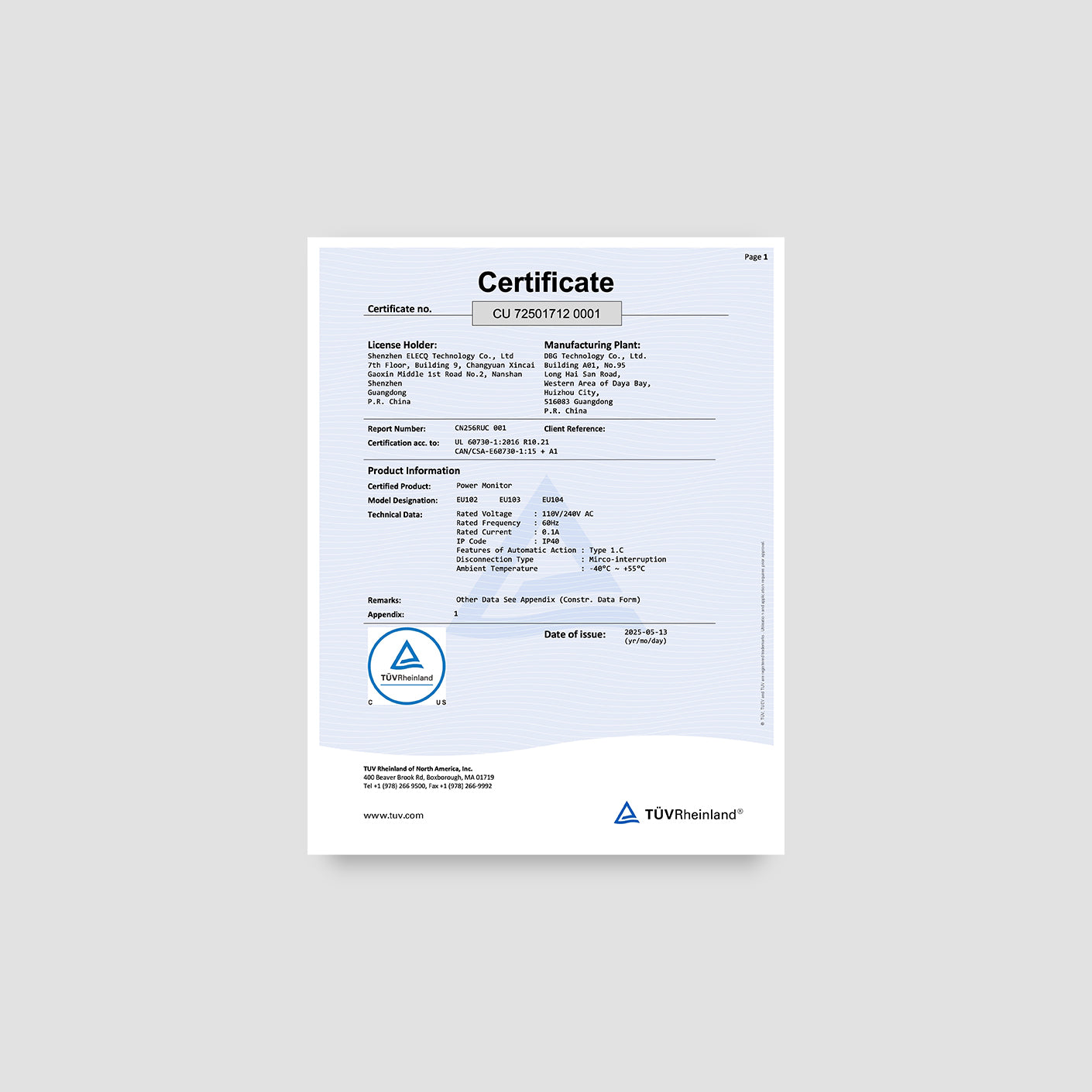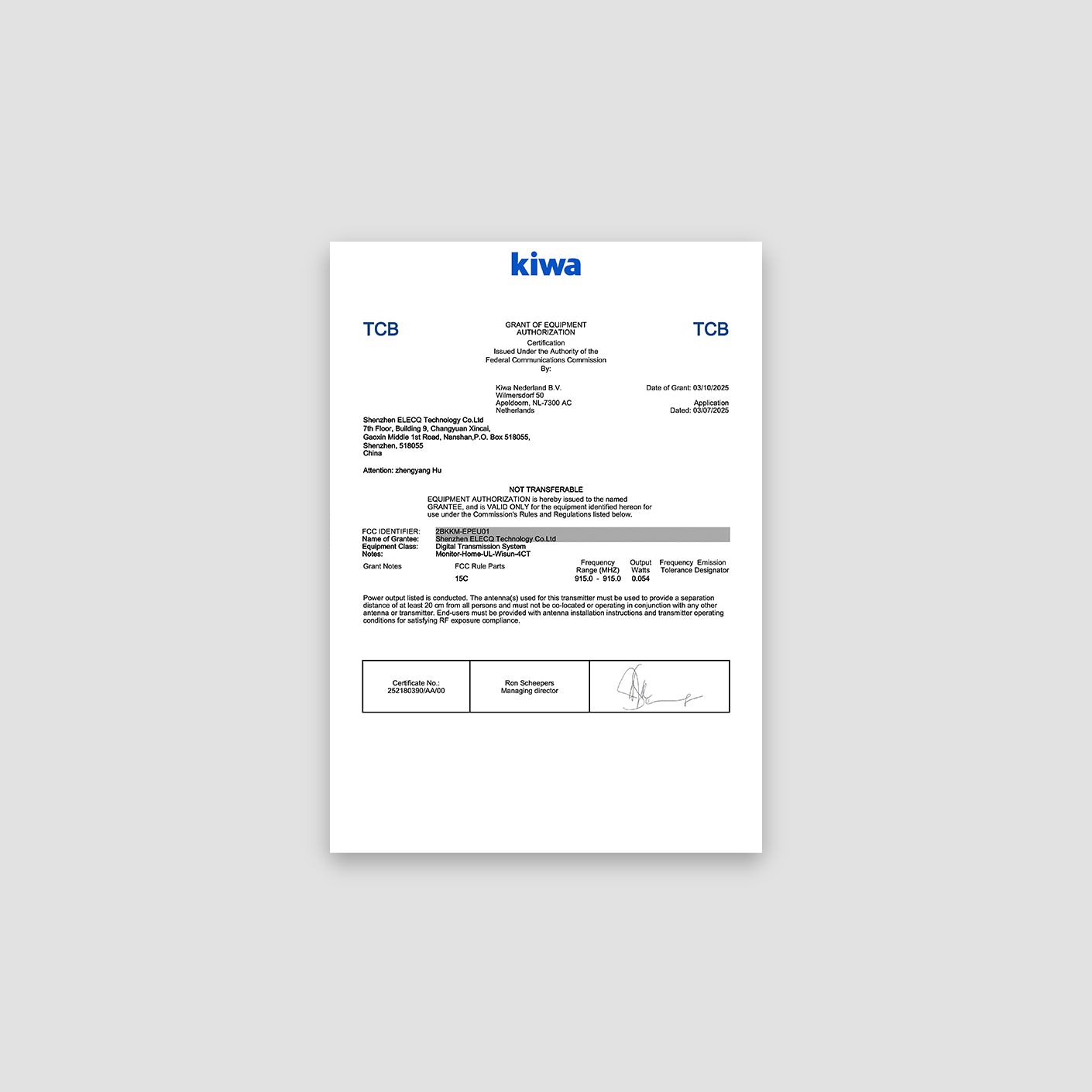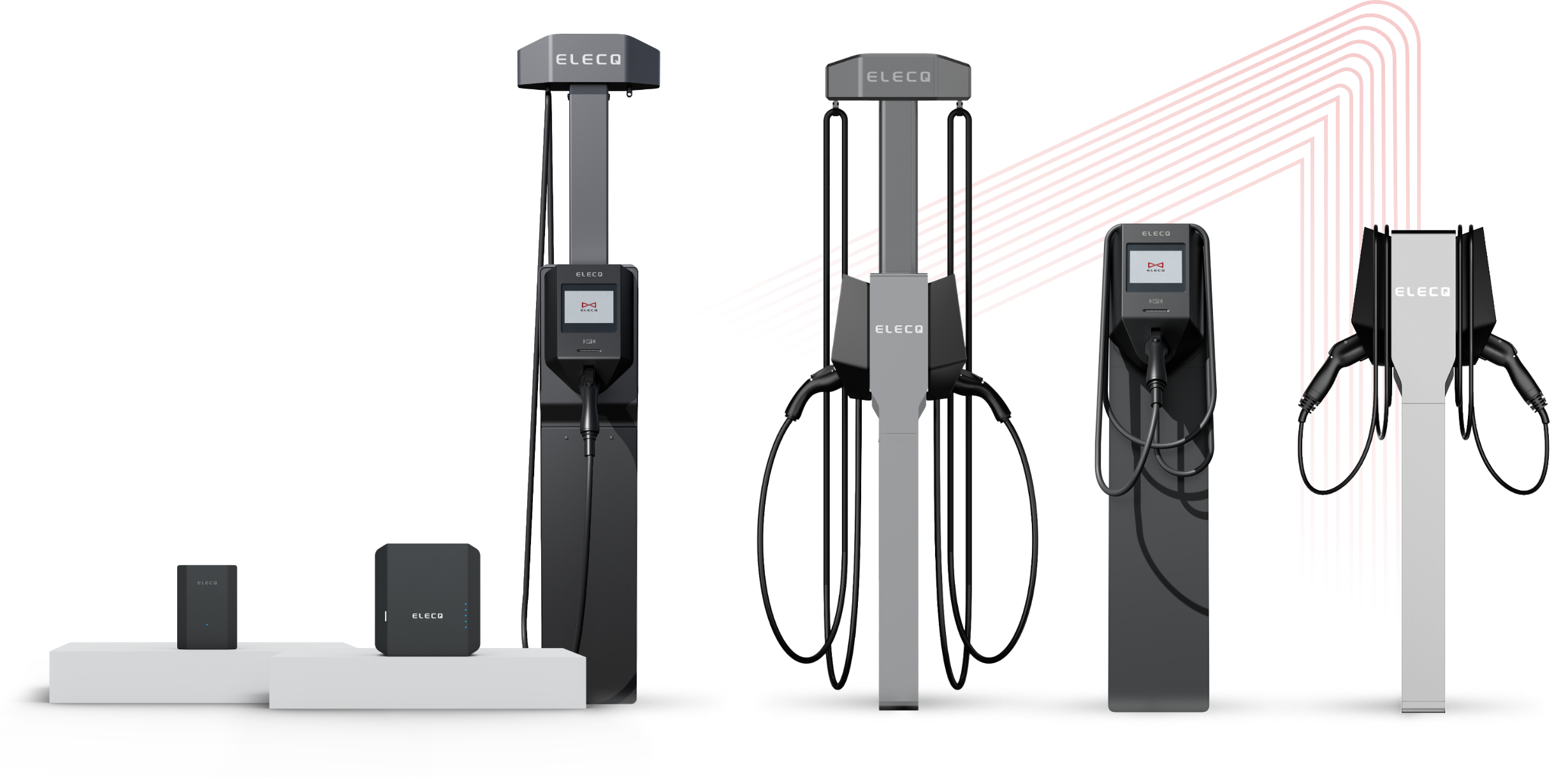
Accessories
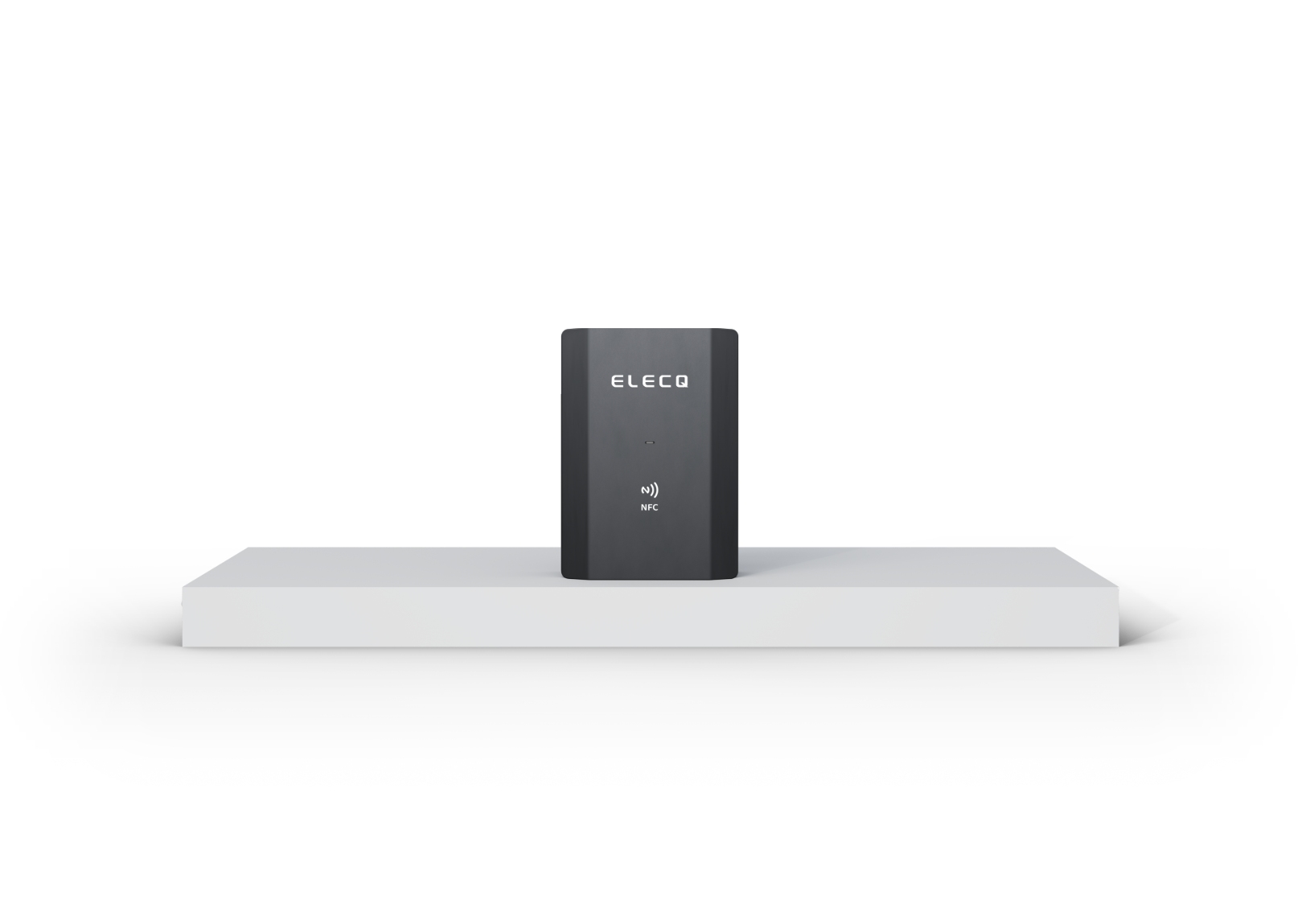
Elecq Power Monitor
Elecq Power Monitor is a compact, intelligent energy sensor designed for residential and commercial settings. It connects directly to your main panel to monitor real-time load, enabling dynamic, millisecond-level response for smarter and safer EV charging. With long-range wireless (Wi-SUN) or RS485 options, it operates offline without relying on the cloud—ideal for homes, apartments, or multi-charger installations requiring fast, stable, and autonomous load balancing.
Elecq Power Monitor (US) Installation Guide
The video will guide you through the installation of the Elecq Power Monitor.
FAQ
Why does the Elecq Power Monitor exist as a product?
The Elecq Power Monitor was developed to solve a common and growing problem in residential EV charging: limited electrical capacity at home.Many households—especially older homes—do not have enough available power to support a high-power EV charger without overloading the electrical system or undergoing costly panel upgrades. The Elecq Power Monitor addresses this challenge by:
- Enabling Smart Load Management
It monitors real-time household energy usage and dynamically adjusts the EV charger's output to avoid overloading the system. - Reducing Installation Costs
By eliminating the need for expensive electrical panel upgrades, it significantly lowers the total cost of installing a Level 2 charger. - Enhancing Safety and Efficiency
It ensures that the EV charging process doesn’t interfere with essential household appliances, maintaining grid safety and user peace of mind. - Supporting Sustainable Energy Integration
When combined with solar panels or future energy systems, it allows intelligent prioritization of self-generated power—further reducing reliance on the grid.
Conclusion:
The Elecq Power Monitor is not just a hardware accessory—it’s a strategic enabler for safe, intelligent, and scalable EV charging in modern homes.
How does the Elecq Power Monitor work?
The Elecq Power Monitor operates as a real-time load detection and dynamic charging control system for home EV charging. Here's how it works:
- Real-Time Power Monitoring
The monitor uses CT (current transformer) clamps to measure the total power consumption of the household. It continuously tracks how much electricity is being drawn by other appliances and loads. - Data Transmission to EV Charger
The collected energy data is transmitted to the Elecq EV Charger via Wi-SUN wireless communication or RS485 wired connection. This ensures fast, stable, and low-latency data exchange. - Dynamic Charging Adjustment
Based on real-time consumption data, the charger automatically adjusts its charging current to avoid exceeding the household’s electrical capacity. For example, when other appliances are using more power, the charger reduces its output to prevent overload. - Load Priority & Cost Reduction
By prioritizing household loads, the system ensures safe charging without triggering breakers. This smart control reduces or eliminates the need to upgrade the main electrical panel—saving homeowners significant installation costs.
Conclusion:
The Elecq Power Monitor intelligently balances the power demand of the entire home, enabling safe and efficient EV charging even in homes with limited electrical capacity. It’s the foundation of Elecq’s smart load management system.
How does the Elecq Power Monitor communicate?
The Elecq Power Monitor supports two communication methods to ensure reliable and flexible data transmission to the EV charger:
- Wi-SUN Wireless Communication
By default, the Power Monitor uses Wi-SUN (Wireless Smart Utility Network), a robust wireless protocol designed specifically for utility and energy applications. Wi-SUN offers long-range, low-latency, and interference-resistant communication, making it ideal for real-time load management in residential environments. - RS485 Wired Communication (Optional)
For installations where a wired setup is preferred or required—such as locations with heavy wireless interference or complex building structures—the Power Monitor also supports RS485, a stable and widely adopted industrial communication standard.
Both options allow the Power Monitor to send real-time household energy consumption data to the Elecq EV Charger, enabling dynamic charging adjustments that protect the home’s electrical infrastructure.Conclusion:
Whether wireless or wired, the Elecq Power Monitor ensures fast, secure, and consistent communication with the EV charger to deliver safe and intelligent charging at all times.
What are the advantages of Elecq Power Monitor's Wi-SUN communication compared to Wi-Fi?
The Elecq Power Monitor adopts Wi-SUN (Wireless Smart Utility Network) technology instead of traditional Wi-Fi, delivering significant advantages in terms of reliability, scalability, and performance for home energy management:
- Interference Resistance – Excellent
Wi-SUN operates in the Sub-GHz band, which experiences minimal interference compared to the crowded 2.4 GHz Wi-Fi spectrum. This ensures more stable performance, especially in environments with multiple connected devices. - Communication Range – Extended
Wi-SUN supports long-range communication—up to hundreds of meters—with strong signal penetration. In contrast, Wi-Fi is typically limited to tens of meters and suffers from weak performance through walls or metal structures. - Network Reliability – High
Wi-SUN uses a mesh network with self-healing capabilities. This means devices can dynamically reroute communication through neighboring nodes, maintaining consistent connectivity. Wi-Fi networks are more prone to drops and require manual reconnection. - Power Consumption – Low
Wi-SUN is optimized for low-power applications, making it ideal for continuous monitoring scenarios. Wi-Fi typically consumes more power, which is not efficient for devices requiring 24/7 operation. - Topology & Scalability – High
Unlike Wi-Fi’s single-point architecture, Wi-SUN supports scalable mesh networking, allowing multiple devices to communicate over a large area with high flexibility and minimal performance degradation. - Security – High
Wi-SUN employs industrial-grade AES-128 encryption, offering robust protection for data transmission—on par with or superior to most consumer-grade Wi-Fi setups. - Signal Penetration – Strong
Operating on Sub-GHz frequencies, Wi-SUN penetrates walls and other obstructions more effectively than Wi-Fi, ensuring stable performance even in complex indoor layouts.
Conclusion:
By adopting Wi-SUN, Elecq ensures robust, interference-resistant, and scalable communication between the Power Monitor and EV Charger. This architecture significantly enhances the reliability and safety of home EV charging without the connectivity issues typically associated with Wi-Fi.
Why is wireless connection recommended for the Elecq Power Monitor?
Wireless connection—specifically using Wi-SUN—is recommended for the Elecq Power Monitor for several key reasons:
- Simplified Installation
Wireless connectivity eliminates the need for physical wiring between the monitor and the EV charger, significantly reducing installation time and labor costs. This is especially advantageous in retrofit scenarios or complex home layouts. - Non-Invasive Setup
Since no wall drilling or conduit installation is required, wireless deployment is cleaner and less disruptive to the home environment—ideal for existing residential buildings. - Flexible Placement
With wireless communication, the Power Monitor can be installed wherever it's most optimal for accurate load measurement, without being constrained by the charger’s location. - Scalability and Future-Proofing
Wi-SUN supports mesh networking, allowing for future expansion (e.g., adding more chargers or smart energy devices) without additional cabling or restructuring. - Reliable and Robust Communication
Compared to Wi-Fi, Wi-SUN offers superior range, penetration through walls, and resistance to interference—ensuring stable and continuous operation even in challenging signal environments.
Conclusion:
Recommending wireless connection—especially via Wi-SUN—enables Elecq Power Monitor users to benefit from a faster, cleaner, and more reliable installation, while maintaining high communication performance and scalability for future energy management needs.
Why can the Elecq Power Monitor achieve millisecond-level response?
The Elecq Power Monitor is engineered to deliver millisecond-level response times in detecting and reacting to changes in household power consumption. This ultra-fast responsiveness is achieved through the following core design features:
- Real-Time CT Data Sampling
The monitor uses high-frequency sampling from current transformers (CTs) to capture rapid fluctuations in the household’s energy usage with high precision. - Low-Latency Communication Protocol
Powered by Wi-SUN or RS485, the system ensures low-latency data transmission between the Power Monitor and the Elecq EV Charger. Wi-SUN’s utility-grade mesh network is optimized for fast and reliable communication under real-world conditions. - Local Processing & Direct Control
Unlike cloud-dependent systems, the Elecq Power Monitor processes data locally and communicates directly with the charger. This edge-based architecture avoids delays associated with server-side decision-making, enabling sub-second response and adjustment. - Purpose-Built Firmware Optimization
The firmware embedded in the monitor and charger is optimized for high-frequency polling and real-time current regulation, ensuring immediate adaptation to changing load conditions.
Conclusion:
Through fast sampling, low-latency communication, and local real-time control, the Elecq Power Monitor enables millisecond-level responsiveness—providing safer, more efficient, and truly dynamic home EV charging.
Why does the Elecq Power Monitor require installation via the Partner app?
The Elecq Power Monitor must be installed and configured using the Elecq Partner App to ensure secure pairing, accurate setup, and dependable performance. Here’s why:
- Secure Device Binding
The partner app enables encrypted one-to-one pairing between the Power Monitor and the Elecq EV Charger, ensuring that communication remains secure and device-specific. - Accurate Configuration by Certified Electricians
The installation process is designed to be carried out by qualified electricians, who can correctly set electrical parameters such as grid type, CT orientation, and current limits. This ensures accurate real-time monitoring and safe charging control. - Installation Testing & Validation
The Elecq Partner App includes built-in testing functions to validate installation accuracy. It checks whether the CT clamps are installed correctly, verifies real-time data flow, and ensures successful communication between the monitor and the charger—before the system goes live. - Streamlined, Error-Free Commissioning
The app provides a step-by-step guided workflow, minimizing installation errors and reducing setup time across varied site conditions.
Conclusion:
The Elecq Partner App is essential to delivering a professional, secure, and precisely calibrated installation—ensuring that the Power Monitor performs reliably and safely in real-world home energy environments.
Elecq Power Monitor – Installation Overview & Key Notes
Installation Diagram Overview
The Elecq Power Monitor is typically installed near the household distribution panel. It uses CT clamps to measure current on the main circuit (and solar input if applicable) and communicates with the EV charger via Wi-SUN or RS485. Professional installation by a certified electrician is required.
CT Connection Guidelines
Main Circuit CT Setup (G1 & G2):
- CT clamps for the main circuit are rated at 200A.
- Arrow Direction: Ensure each CT arrow points toward the breaker (i.e., toward the load side).
- Correct Matching:
- Improper orientation or mismatched wiring will cause the system to malfunction.
Solar CT Setup (S1 & S2, if applicable):
- CT clamps for solar systems are rated at 100A.
- Arrow Direction: Ensure each CT arrow points toward the breaker (same principle as main circuit).
- Correct Matching:
- CTs on G1 and S1 must both match L1, and CTs on G2 and S2 must match L2.
Terminal Connection Rules
- Connect CT wires to the Phoenix terminal securely, and observe correct polarity as labeled.
- If no solar system is present, only connect G1 and G2.
- If solar coordination is enabled, connect both G1/G2 and S1/S2 terminals.
Antenna Installation (for Wi-SUN)
- Attach the antenna to the Elecq Power Monitor.
- Important: The antenna must be installed outside the metal distribution panel to avoid signal interference caused by shielding.
App-Based Configuration
- Use the Elecq Partner App to:
Conclusion:
Precise CT orientation, correct wire pairing, and proper antenna placement are critical to the Elecq Power Monitor’s performance. Always follow installation protocols and validate through the Partner App before commissioning the system.
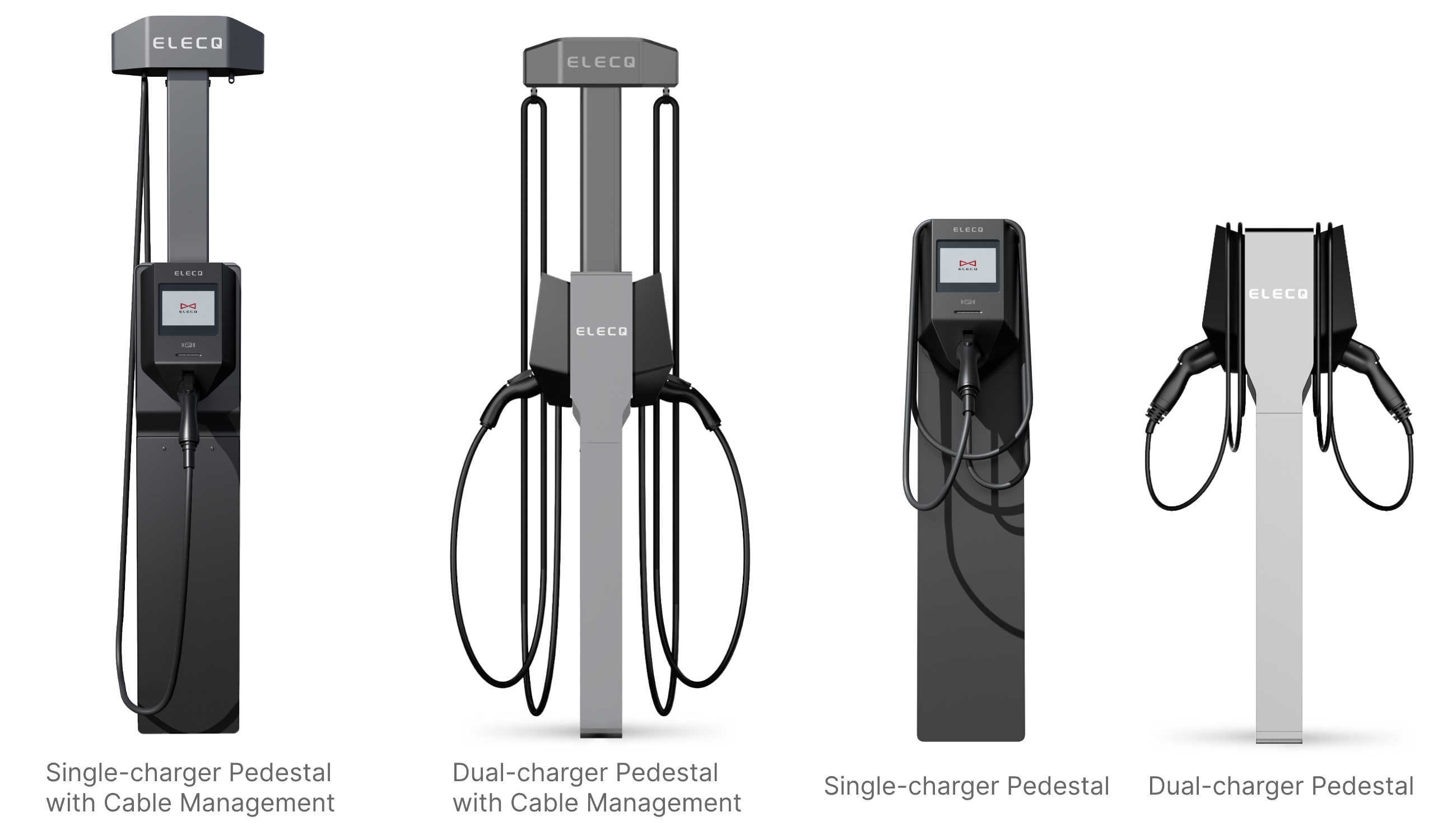
Elecq Charging Pedestal
Multiple pedestal options to meet all your needs: single, dual, with or without cable management.



